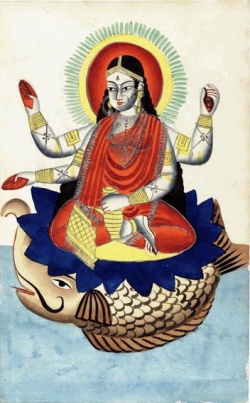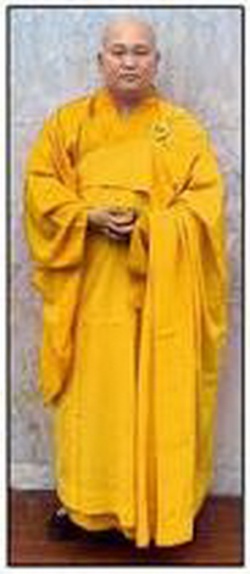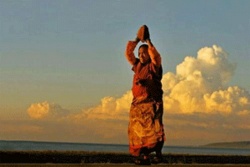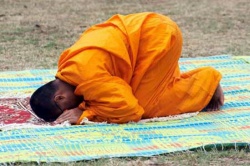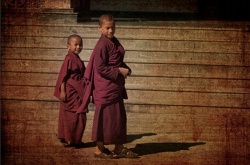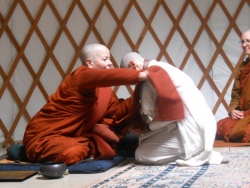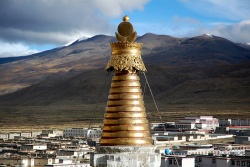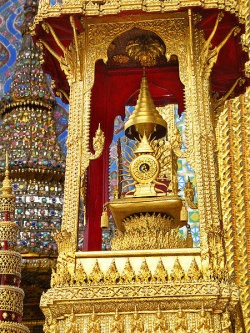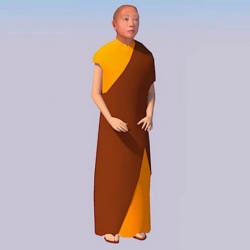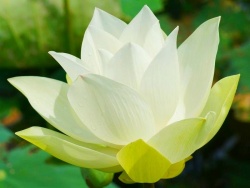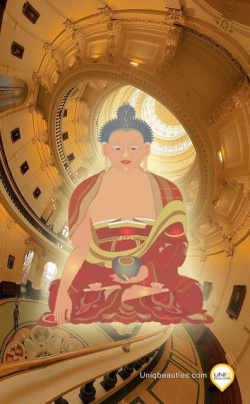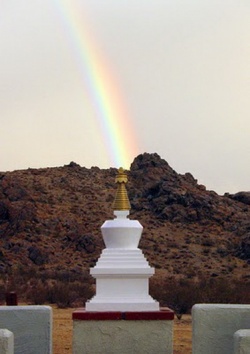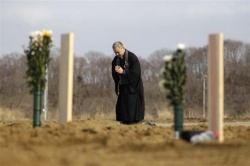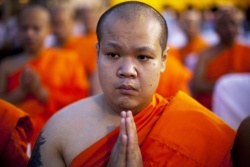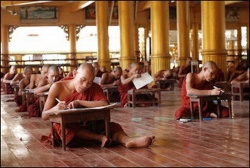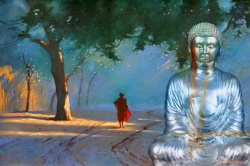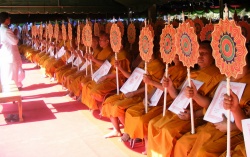Buddhism and Misogyny
From Dhamma Wiki
Buddhism is the most egalitarian, non-misogynistic of all the major world religions.
Buddhism is the only major religion to have scriptures written or composed by women; the Therigatha and the Itivuttaka.
A woman, like a man can attain to the same level as the founder of the religion of Buddhism and become fully enlightened, an Arahant.
Nevertheless, there are some non-Buddhists and even some Buddhists that contend that the Buddha was misogynistic.
This is because of some passages in the Buddhist scriptures, the Tipitaka that appear sexist, that the Buddha was reluctant to ordain women,
that the bhikkhuni line ended and cannot be revived, that the Buddha said that the teachings (religion) would only last 500 years because women were given permission to ordain as nuns (bhikkhunis),
because of the extra rules that were imposed on the female monastics, including the eight ‘heavy rules,’ and the passage that states that only a man can be a samma-sam-buddha who teaches the masses after the teachings have died out. Each of these claims are examined below.
Contents
1 Seemingly misogynistic suttas
2 The Buddha's initial reluctance
3 Bhikkhuni reinstatement
4 Buddhism lasting 500 years
5 Extra rules
6 Samma-sam-buddhas
7 Modern Theravada
8 Suttas supporting non-dogmatism
9 See also
10 References
Seemingly misogynistic suttas
There are some suttas (discourses) of the Buddha that appear to be misogynistic.
But this only at a very superficial first glance. For example, there are passages where the Buddha advises the monks not to pay attention to women, not to look at them, and to avoid their company unless accompanied by other people.
Seeing this as misogynistic would be failing to look at the complete context of these passages.
Most discourses involve the Buddha giving a talk to the monks and begin with the very familiar, “O Bhikkhus . . ” or just “Bhikkhus, . .” The Buddha was simply warning the monks of the danger in attachment to the senses and we must remember that the monks and nuns in Theravada Buddhism are monastic, celibate.
The myth of misogynistic suttas is easily dispelled when you look at the context of the teachings.
The Buddha and his monks did in fact meet with women, when accepting meals, giving instruction, and on some occasions the Buddha even listened to nuns giving a Dhamma talk, afterward saying how he could not have taught the teaching any better (Majjhima Nikaya 44).
The Buddha's initial reluctance
Bhikkhuni ordination
After Siddhattha became the Buddha, Maha Pajapati Gotami approached him and asked if he would allow her and other women to renounce the world, thus becoming nuns.
The Buddha was very reluctant to do this but Ananda interceded on Gotami’s behalf. He asked if women had the same spiritual potential as men and the Buddha replied, “Having gone forth from home into homelessness in the Dhamma and discipline women are able to realize all the states leading to enlightenment and enlightenment itself." The Buddha did decide to allow women to become nuns.
Why was the Buddha so reluctant to take this step? At this time there were no monasteries as such, monks lived in the forest or in parks on the outskirts of towns and cities.
Although the position of women in Indian society was much higher that it later became, a lone woman still stood a good chance of being thought of as loose and being open to harassment or worse.
The Buddha probably thought that having women living in forests posed too many difficulties. As it is, this turned out not to be the case.
Many scholars and teachers have theorized some possibilities for the reluctance:
The condition and status of women at the time, would mean that fewer people would become interested in Buddhism if women were ordained. As people progressed, at a later date the ordination would be better.
Because these women (many who were mothers, daughters, wives, sisters, cousins of many of the bhikkhus) might be subjected to rape, assault, sexual harassment and being termed "prostitutes and thieves", which in fact, did later occur as recorded in the Vinaya.
The Buddha was testing Ananda, Maha Pajapati Gotami, and the other women to see how devoted they really are.
There is some evidence to suggest the latter may be true. In the Suttas it is reported that previous Buddhas (fully enlightened teachers of the masses) also had a bhikkhuni order.
Bhikkhu Dr. Analayo, a scholar monk has been a strong advocate for bhikkhuni ordination and in his research feels that the Buddha was misrepresented in the texts about being reluctant to ordain women. Ven. Dr. Analayo pointed out an obvious timeline discrepancy that amazingly has gone undetected until now.
It involves the deeply held belief that Ananda played an instrumental role in the founding of the bhikkhuni sangha.
He was credited, and later chastised by the First Council, for advocating for the ordination of the Buddha's maternal aunt and stepmother, Mahapajapati.
In a paper presented at the University of Marburg, Germany, Ven. Dr. Analayo writes, "There are many problems chronologically, however, in the traditional account of Mahaprajapati (from the Commentaries).
She first requested ordination five years after Buddha's enlightenment; but Ananda, who requested Buddha on her behalf, first ordained only twenty years after Buddha's enlightenment. Considering that Mahaprajapati, as Buddha's maternal aunt, raised him after his mother's death, she would have been about eighty years old when Ananda was senior enough to make the request."
Bhikkhuni reinstatement
Bhikkhuni ordination
To be properly ordained, a nun must be ordained first by a quorum of monks and then a second time by a quorum of nuns.
In Theravada lands the nun’s lineage died out around the turn of the first millennium and traditionalists do not believe that it can or should be revived because there are no nuns to ordain new nuns.
However, the nuns’ lineage continues in most Mahayana countries, and, in places like Taiwan, nuns are a dynamic and respected presence within the Buddhist community.
In 1996 through the efforts of Sakyadhita, an International Buddhist Women Association, the bhikkhuni line was revived. This was done by using the Mahayana nuns for the double ordination ceremony.
The Mahayana nuns had a dual ordination both in Theravada and Mahayana, so the line never did completely die out, just the exclusively Theravada line of bhikkhunis.
The Mahayana nuns from Taiwan can trace their lineage to the Dharmaguptaka - Vibhajjavada, which is the precursor to Theravada.
Therefore, many teachers and scholars have applauded the reinstatement. Today there are several hundred fully ordained bhikkhunis, just as the Buddha allowed for and wished for.
Buddhism lasting 500 years
Another criticism is that the Buddha is said to have remarked that the teachings (Buddhism) would only last 500 years because he agreed to ordain women.
This passage is mentioned in the rules for the monks in the Vinaya and is not mentioned in any other place.
The Buddhist scriptures, the Tipitaka were oral teachings memorized for hundreds of years before being committed to writing in the first century BCE. All of the major and important teachings are repeated throughout many of the books of the Pali Canon.
There are very few teachings that are only mentioned once. The fact that this reported 500 years statement is only mentioned once, already raises some questions.
If we are not satisfied that this may have been added later and not a saying of the Buddha, there is still another non-misogynistic possibility, by considering the context and degree of sexism in India during the time of Buddha still through today.
If we look at history, the Buddha was correct (if he did say that).
Back then there were no airplanes, fax machines, internet, etc. People defined their world in terms of their 500 mile radius. Buddhism did die out from its home country of India and it started to die out right at about 500 years after the death, paranibbana of Buddha.
A famous Hindi king took back control of India and wanted the caste system back since he was a member of a high caste.
He brought the caste system back and then there was the acceptance of Buddha as an incarnation of Vishnu. Suddenly there was no more reason for Buddhism among the Indians.
They abandoned Buddhism, but fortunately, the teachings did survive in Sri Lanka and other Southeast Asian nations and then the Mahayana spread to Tibet, China, and the rest of Asia.
During the time of the Buddha, the other major belief systems were Brahmanism (precursor to Hinduism) and Jainism. In Brahmanism, like Hinduism of today, only men could be priests.
In Jainism, women could be nuns, but had no potential for enlightenment. It was the later Svetembara sect of Jainism which stated that women could attain enlightenment.
The Buddha's teachings were quite revolutionary in that not only could women become nuns, but also that they could attain enlightenment.
Since the Buddha always considered the context of his audience and what they were ready for it is highly likely that he wanted to gradually phase out the sexist policies, as the people were ready for it. Extra rules
8 Garudhammas
There are 227 precepts that bhikkhus (monks) take and 311 for bhikkhunis (nuns). There were more rules for nuns than the rules for monks, but they primarily dealt with the protection of the nuns.
For example, a nun was raped when walking through a forest by herself.
The Buddha followed this incident with a rule that no nun could walk through the forest by herself.
The more controversial rules are the so-called eight heavy rules, which clearly appear to place the nuns lower than the male monastics, including rules that a women ordained for 100 years is still lower in rank to a monk ordained one day and another rule that nuns cannot teach or ordain monks.
Ayya Khema was a German born fully ordained nun who wrote many bestselling books and was a master of the Dhamma and the Jhanas.
She opened many monasteries and temples in Asia and Europe. Ven. Dr. Dhammananda (C. Kabilsingh) and Ven. Dr. Kusuma are fully ordained bhikkhunis, both with a Ph.D. and are continuing in Sri Lanka and Thailand where Ayya Khema left off and have written on the subject of women’s status.
They state that the 8 heavy rules cannot be taken seriously. There are verses in the suttas where the Buddha pointed out some bad monks to some nuns.
The Buddha told the nuns not to respect these bad monks.
The first nuns did not have nuns present to ordain them. The first nuns did not have senior nuns to seek full ordination to after a probationary period (no. 6 of the 8 heavy rules).
Also, there are suttas where the Buddha deliberately remains silent while nuns are giving a Dhamma talk.
After the Dhamma talk, the Buddha exclaims that he could not have said it any better (such as in Majjhima Nikaya, Sutta 44 where the Buddha praises the enlightened nun, Ven. Dhammadinna).
All of these facts run contrary to the 8 heavy rules and provide evidence that the 8 heavy rules were added later.
The Buddha regularly adapted and changed his code of conduct for monks and nuns as the situation required it (Vinaya). In the Buddhist Vinaya there is a rule that monks and nuns cannot receive full ordination until the age of 20, prior to that time they are novice monks and nuns.
But the Buddhist scriptures clearly show that at least one monk, such as Sopaka, received full ordination at the age of 7 (Khuddaka Nikaya, Theragatha 486).
This is because he was quite advanced and attained enlightenment, but more importantly shows that many of the Vinaya rules were developed later, as the time and context called for the changes to the rules.
In one passage the Buddha specifically mentions that he only creates a rule for the Vinaya when the time is right and the time calls for it (Vinaya, Suttavibhanga 3.9)
In theMaha-paranibbana sutta, of the Digha Nikaya (sutta 16), the Buddha states that the monks and nuns may abolish the minor rules as they see fit: “After I am gone, the Sangha, if it wants, may abolish the lesser and minor training rules.”
Once again, the Buddha in his wisdom recognizes that there will most likely be a need for revisions in certain rules as society is more ready for egalitarian type conditions.
Considering the historical and logical problems already shown in the eight heavy rules, these are the first that must be let go.
In addition, any other rules that might suggest inequality should be let go and those women who have fully ordained should be fully accepted by all Buddhists as there have been ordinations with monks and nuns present and they need not all be from one tradition at the start of the reinstatement.
This is keeping in line with the Buddha’s intentions for an Order of monks and an Order of nuns.
Samma-sam-buddhas
8 conditions for a sammasambuddha
Virtually no one claims that women cannot attain enlightenment in Buddhism. The Buddha was very clear that women are able to attain to the final state, the goal of Buddhism; enlightenment and Nibbana.
The Buddha was asked in so many words, "is there even one woman nun who is fully enlightened?" The Buddha responded, "There are not only one hundred . . . or five hundred, but far more bhikkhunis, my disciples,
who by realizing for themselves with direct knowledge here and now enter upon and abide in the deliverance of mind and deliverance by wisdom . . ." Sutta 73 Majjhima Nikaya and also in other suttas too.
There are three types of buddhas or enlightened ones. One is an Arahant who teaches others; another is a silent buddha who attains enlightenment but does not teach, but presumably can still send his or her “rays” of metta - loving kindness to the world.
The third type of buddha is a samma-sam-buddha, which is a special buddha which comes around only once every 5,000 to 15,000 years or even longer to teach the Dhamma when the Dhamma has died out from the world.
This “savior” type of buddha is who the historical Buddha was.
In all three types of buddha, there is full liberation and Nibbana. One does not need to be a samma-sam-buddha to attain enlightenment or Nibbana. Thus, full liberation is open to women. However, there are fundamentalist Buddhists who contend that only a man can become a samma-sam-buddha.
The issue is mostly meaningless, since we already have a Buddha for our time and well over 99% of us will not attain to any of the three types of buddha, let alone the samma-sam-buddha title. But it still makes a point that only men can have this title and this is still a subtle form of sexism which can be used to discriminate in other ways.
The famous Theravada teacher Dipa Ma, was sitting quietly in her room one day while her teacher and another teacher were talking. Her teacher remarked that only a man can become a buddha (samma-sam-buddha).
Dipa Ma immediately rose from her silence and exclaimed, “I can do anything a man can do!” The guests erupted with laughter and agreement. Dipa Ma was an amazing woman who mastered all the Jhanas and taught Vipassana from her humble small home in India.
What is the origin of this idea that only a man can become a samma-sam-buddha? There is a list of who can be a teaching samma-sam-buddha in the Khuddaka Nikaya, Buddhavamsa 2.59 and one of the items includes being a male.
The Buddhavamsa was one of the most recent, youngest books of the Pali Canon.
It is one of the furthest books in years after the time of Buddha. (See: Chronology of Pali Canon) It could be from the 32 marks of a great man.
There are a few suttas which mention the 32 marks of a great man and how the Buddha possesses these marks. If you see the list of these so-called great marks, you will see that they are truly mythological and completely legendary; certainly nothing to be taken seriously or to justify sexism.
Some of the items on this list of 32 marks of a great man include a lion’s chest, a jaw like a lion, a tongue that is so long that it can reach the forehead and both ear holes, 40 teeth, and a penis encased in a sheath.
Because the list is that of a great “man” and includes the penis encased in a sheath, it obviously excludes women.
But anyone with a little common sense can see these mythological claims are designed to elevate the status of religious leaders by making them sound super human.
It helps to convert the uneducated masses, but does nothing to shed more light on the wonderful teachings of the man who became a buddha.
The origin of the 32 marks of a great man has nothing to do with Buddhism. This is a pre-Buddhistic concept. This is proven by the fact that Asita, the seer who came to see the baby Buddha just after birth predicted that the Buddha will either become a great king and ruler or a great religious man.
This seer named Asita, checked the baby Buddha and found the 32 marks of a great man present on Buddha. This was before the Buddha’s enlightenment, before Buddhism, and before the Buddha’s first teachings. (Sutta Nipata 3.11)
This situation is not limited to the Theravada and in fact Zen and Vajrayana have an even more patriarchal line with all of the Zen leaders of the past being male and the re-births of all Dalai Lamas have been male as the search committee only looks for recently born boys after the passing of a previous Dalai Lama.
Another possibility is that only a male can be a samma-sam-buddha because in a male-dominated society, a female will not be accepted as a savior type of teacher and then the teachings will not be renewed and followed.
In a further feminist perspective, a samma-sam-buddha only comes when males are dominating the world for too long, because then the Dhamma will die-out. Modern Theravada
Modern Theravada
The Modern Theravada is a term for some Theravadins who focus on the early teachings of Buddhism and the Pali Canon, but especially the earliest compiled and written texts, such as those listed in the first five of the Chronology of Pali Canon.
The Classical Theravada places all of the later writings, including the Commentaries in very high esteem.
For the Modern Theravadins, nearly all of these issues are moot, because the seemingly misogynistic issues above are from the later writings and commentaries.
Suttas supporting non-dogmatism
There are many suttas supporting the fact that the Buddha was opposed to religious dogmatism, extremism, and that he did support egalitarianism. A few excerpts are shown here below:
“Do not believe in something because it is reported. Do not believe in something because it has been practiced by generations or becomes a tradition or part of a culture.
Do not believe in something because a scripture says it is so. Do not believe in something believing a god has inspired it. Do not believe in something a teacher tells you to. Do not believe in something because the authorities say it is so.
Do not believe in hearsay, rumor, speculative opinion, public opinion, or mere acceptance to logic and inference alone. Help yourself, accept as completely true only that which you test for yourself and know to be good for yourself and others.” Anguttara Nikaya 3.65 Kalama Sutta
“After I am gone, the Sangha, if it wants, may abolish the lesser and minor training rules.” Digha Nikaya 16
“Birth makes no Brahmin, nor non-Brahmin, makes; it is life’s doing that mold the Brahmin true. Their lives mold farmers, tradesmen, merchants, and serfs.
Their lives mold robbers, soldiers, chaplains, and kings. By birth is not one an out-caste. By birth is not one a Brahmin.
By deeds is one an out-caste. By deeds is one a Brahmin.” Majjhima Nikaya 98, Vasettha Sutta 57-59
“There are two ways a person slanders the Buddha; He who explains a discourse whose meaning needs to be inferred as one whose meaning has already been fully drawn out.;
and He who explains a discourse whose meaning has already been fully drawn out as one whose meaning needs to be inferred.” (Shows that the Buddha did not support literalism, at least not in all cases.) Anguttara Nikaya 2.25
See also
Modern Theravada
32 signs of a great man
8 Garudhammas
8 conditions for a sammasambuddha
Kalama Sutta
2 ways of slandering Buddha
Source
http://www.dhammawiki.com/index.php?title=Buddhism_and_Misogyny
